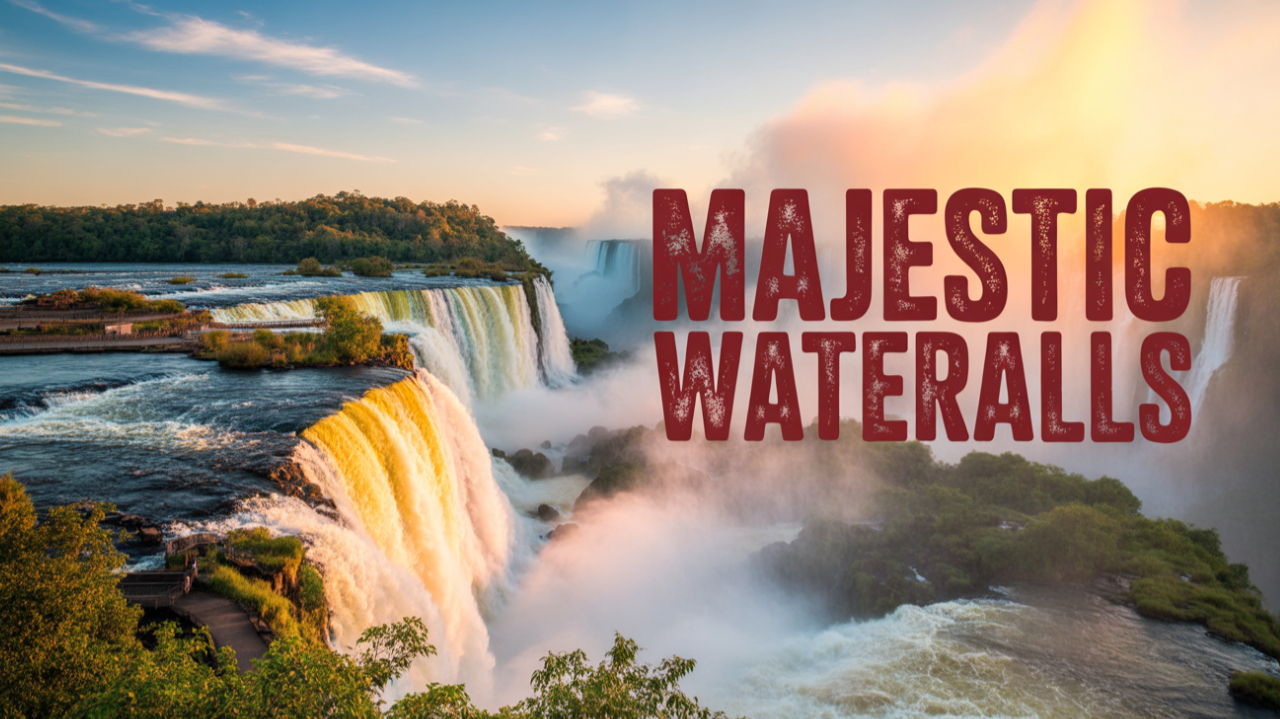Experience the Wonder of Iguazú Falls
If you are a nature and adventure lover, Iguazú Falls should be on your travel itinerary. Spanning across the Argentina-Brazil border, these stunning waterfalls are some of the most powerful and picturesque in the world. For a traveler from Pakistan or elsewhere, Iguazú provides the same feeling of wonder you experience being in front of grand natural attractions such as Hunza Valley, Neelum Valley, or Fairy Meadows but with its own rainforest tropical magic.
1. What Makes Iguazú Falls Special
Unlike a single waterfall, Iguazú Falls is a huge system of 275 cascades that stretch more than 1.7 miles (2.7 km). The roar of plunging water, the spray emanating from the jungle, and tropical birds’ cries make it one of South America’s most spectacular landscapes.
Most spectacular is the Devil’s Throat (Garganta del Diablo), which drops over 80 meters (260 feet) into a canyon filled with mist. The experience feels as intense as witnessing the Northern Pakistan rivers carving their way through rugged mountain valleys—but here, it’s the rainforest that’s doing the work.
Both Argentina’s Iguazú National Park and Brazil’s Iguaçu National Park are UNESCO World Heritage sites, safeguarding dense biodiversity—imagine the Deosai Plains, but tropical and thundering with waterfalls.
2. The Best Time to Visit Iguazú Falls
The falls run throughout the year, but every season offers a different experience.
- Best time to visit Iguazú Falls:
- Rainy season (November–March) is the time of huge water run-off and dramatic scenery. If you want to visit without the crowds, April–October has pleasant climate and fewer tourists.
- Beware of tourist season:
- December to February are the most crowded, with hot and humid weather. Go early morning or late afternoon for gentle light and smaller crowds.
- Photo tip:
- Similar to the waterfalls in Kashmir, early sunlight spreads rainbows over the mist—ideal for photography.
3. Discovering the Argentine Side
If you desire to experience the fury of the falls firsthand, begin from the Argentine side. It’s adventurous and engaging.
- Upper Circuit: Provides elevated views of the waterfalls, similar to a scenic viewpoint in Swat Valley.
- Lower Circuit: Takes you to the proximity of the base—be ready to get drenched.
- Devil’s Throat Walkway: A steel catwalk gets you all the way to the thundering lip of the top drop.
- Boat rides: The Gran Aventura speedboat tour whizzes underneath the falls—roughly like rafting excursions on Pakistan’s Kunhar River, but with an awful lot more splash.
Spend at least a full day on this side. The park’s diminutive train network ties together the big trails, so it’s simple to hop around.
4. Seeing the Brazilian Side
The Brazilian side provides the overall perspective. Here, you can view the whole expanse of the falls—great for panorama shots.
A short, simple trail (around 1.5 km) leads you along observation decks and terminates close to the Devil’s Throat lookout. You will witness dozens of cascades set against leafy green forest, reminiscent of the tiered mountain vistas of Murree or Ayubia but tropical and much noisier.
Need another opinion? Take the Brazilian side helicopter tour for a breathtaking bird’s eye view. Seeing the falls from the air is an experience similar to flying over the Kaghan Valley—only here, it’s rainforest and waterfalls forever.
5. Essential Travel Tips for Visiting Iguazú Falls
Before you start packing your bags, remember these tips:
- Arrival:
- Argentina side: Arrive at Puerto Iguazú (IGR).
- Brazil side: Arrive at Foz do Iguaçu (IGU).
From Pakistan, you will be flying through Dubai, Doha, or Istanbul before arriving at Buenos Aires or São Paulo.
- Border crossing:
- If you want to visit both sides, bring your passport. Crossing is easy, but look into visa regulations beforehand.
- Entrance fees
- Each park charges its own entry fee. Argentina accepts cards, but it’s smart to carry some cash in Argentine Pesos or Brazilian Reals.
- What to wear:
- Lightweight clothes, comfortable shoes, and a waterproof jacket—similar to what you’d wear exploring Malam Jabba or Nathia Gali during misty weather.
- Photography tip:
- Bring a waterproof case for your phone or camera. The mist is constant, especially near the Devil’s Throat.
- How long to stay:
- Stay for 2–3 days to experience both sides in full. Several visitors also spend time in the nearby towns such as Puerto Iguazú, which features wonderful restaurants and handmade markets.
Conclusion
No matter where you’re coming from—Pakistan, the U.S., or somewhere in between—there’s something special about Iguazú Falls that reminds you of how strong nature really can be. The sound of the water, the mist rising up, and the jungle’s vastness of green remind you of how small you really are—in the best way possible.
It’s a destination that combines thrill, beauty, and peace all in one. Visit both Argentina and Brazil sides to experience the full magic of Iguazú, and you’ll leave with memories as timeless as any journey through the valleys of Pakistan.
You can read related blogs or explore Pakistan by visiting mmtravelspk.com.


